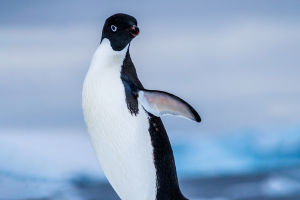The ocean is the birthplace of life and a valuable source of food for humans. It is home to numerous marine species, and many resource-rich fishing grounds provide delicious seafood and significant economic benefits.
Fishing grounds are areas with high fishing value where fish or other aquatic animals pass or swim in groups, forming a concentrated location in fishery production. The distance from the fishery base and the water depth determines the type of fishing ground.
1. Coastal fishing grounds are generally located near the coast with a water depth of fewer than 30 meters.
2. Offshore fishing grounds are not far from the shore, with a water depth of 30 to 100 meters.
3. Offshore fishing grounds are distributed in waters far from the shore, with a water depth of 100 to 200 meters.
4. Deep-sea fishing grounds are in deep waters with a water depth of more than 200 meters.
5. Pelagic fishing grounds are distributed in oceanic waters beyond the continental shelf or in fishing grounds that operate across oceans.
Fishing grounds are often limited to a certain water layer or period. This limitation depends on the density and duration of fish schools, as well as the biological characteristics and ecological habits of fish and changes in their environmental conditions. Therefore, the following conditions must be met to form a fishing ground:
1. Rivers input large amounts of nutrients.
2. The water area is shallow, and the water body is fully mixed, replenishing the bottom layer to the upper layer.
3. There is sufficient photosynthesis and phytoplankton multiply.
4. The water area is shallow, so material circulation is fast, and primary productivity is high.
5. The continental shelf is generally a spawning ground due to the abundance of bait organisms, and the bay is a fattening place for fish.
6. The water depth of the continental shelf is suitable for fishing gear operations.
7. The offshore effect of the upper layer current at the edge of the continental shelf causes upwelling.
8. Coastal water systems and offshore water systems produce coastal fronts in the waters near the edge of the continental shelf.
There are numerous fishing grounds worldwide. Here are two famous examples:
Hokkaido Fishing Grounds
Japan's Hokkaido fishing grounds are a world-renowned large fishing ground.
The Thousand Island Cold Current and the Kuroshio Current meet in the waters near Hokkaido, causing the seawater to move vertically and bringing abundant bait to fish in the upper layers of the ocean. The Hokkaido fishing grounds are rich in marine fish such as salmon, pollock, Pacific herring, Far Eastern sardines, and saury.
Peruvian Fishing Grounds
Peru's fishing grounds are favored by the Peruvian cold current, and the seawater in the upper layer deviates from the coast due to the sea breeze throughout the year.
As a result, deep seawater gradually rises, and the bait and nutrients hidden in the deep layer rise, attracting a variety of fish. However, abnormal changes in the global climate have increased the seawater temperature in the Peruvian fishing grounds, which has seriously affected the growth and reproduction of fish.
Fishing grounds are vital for the fishing industry and provide a significant source of food for humans. Maintaining a healthy ecosystem in the ocean and protecting the environment is crucial to preserving fishing grounds for future generations.


